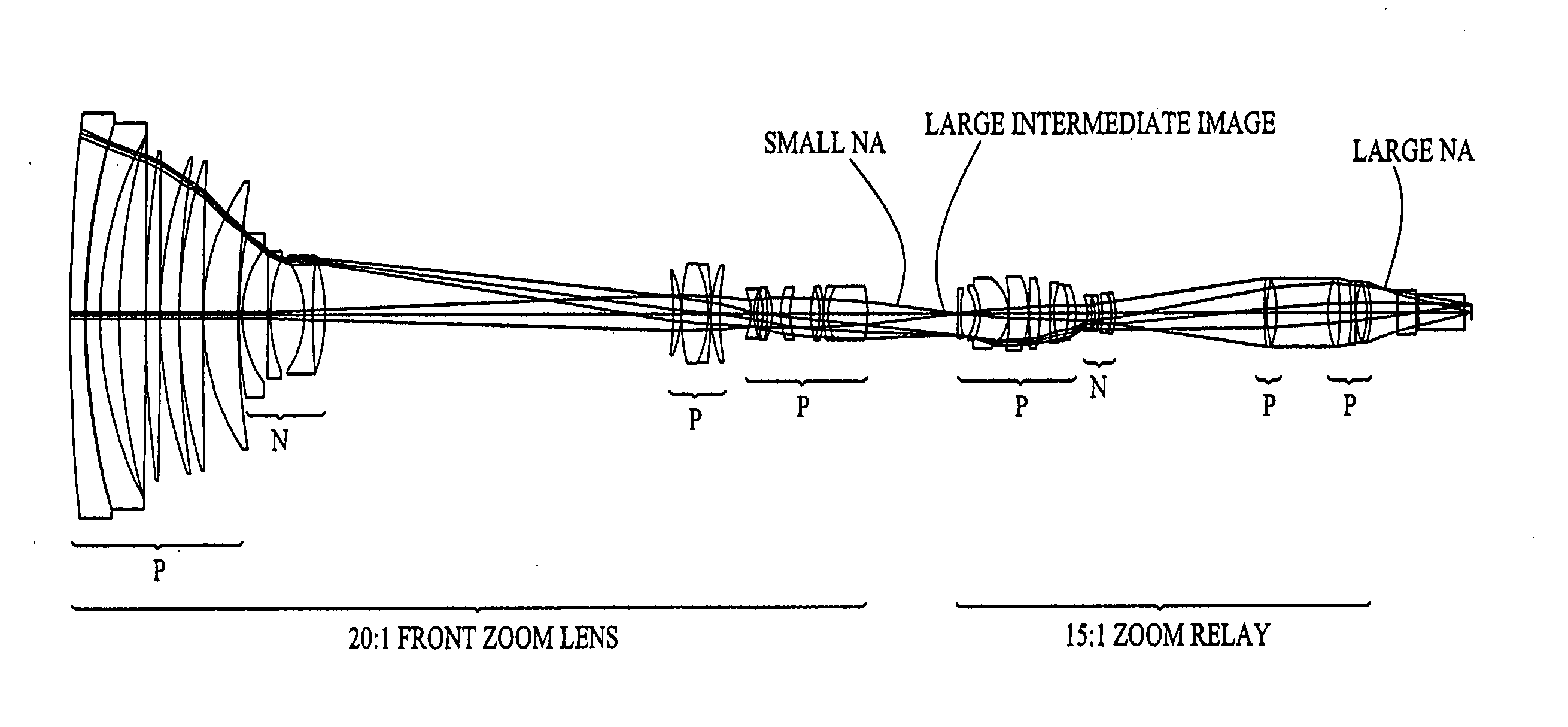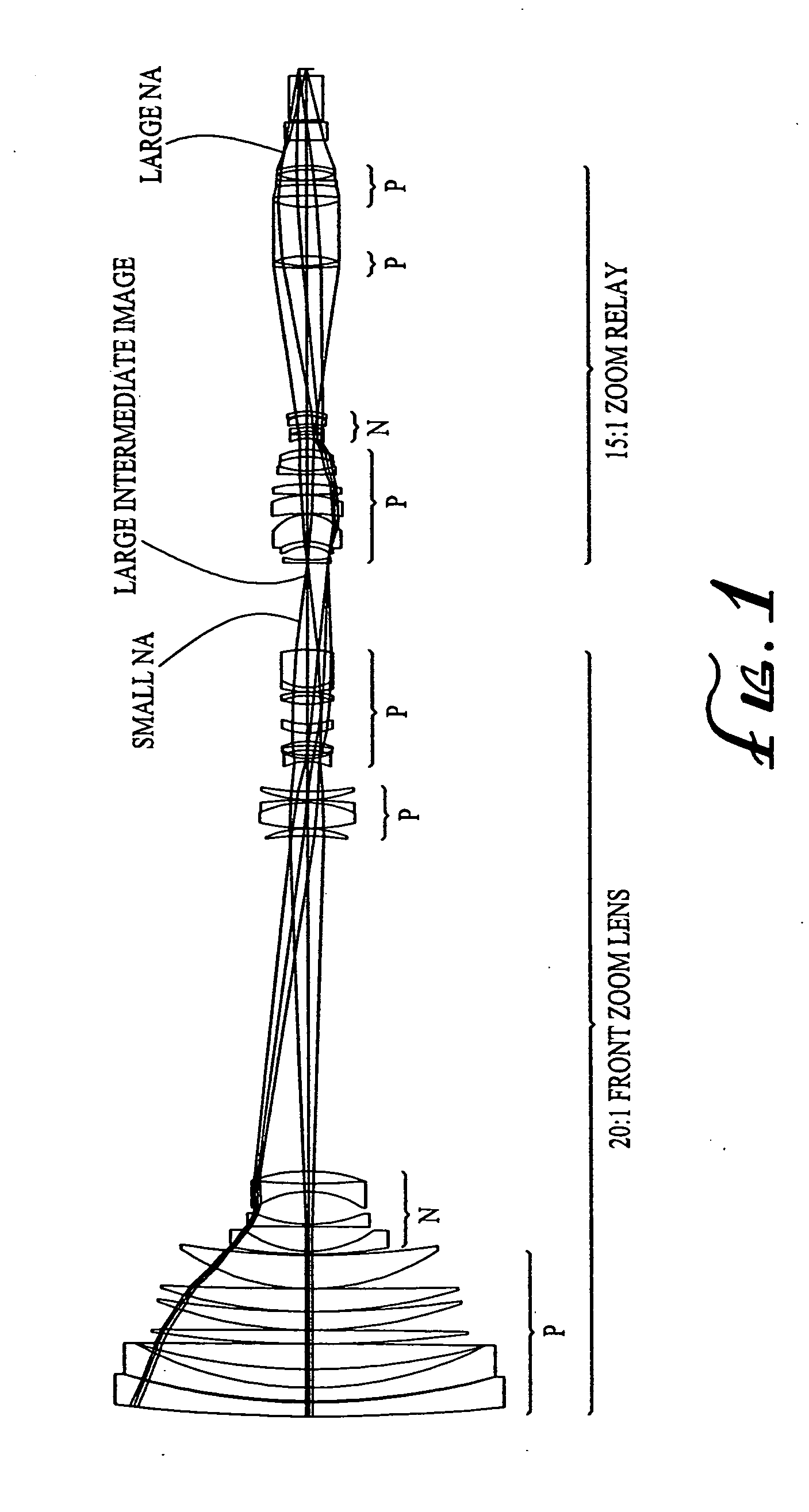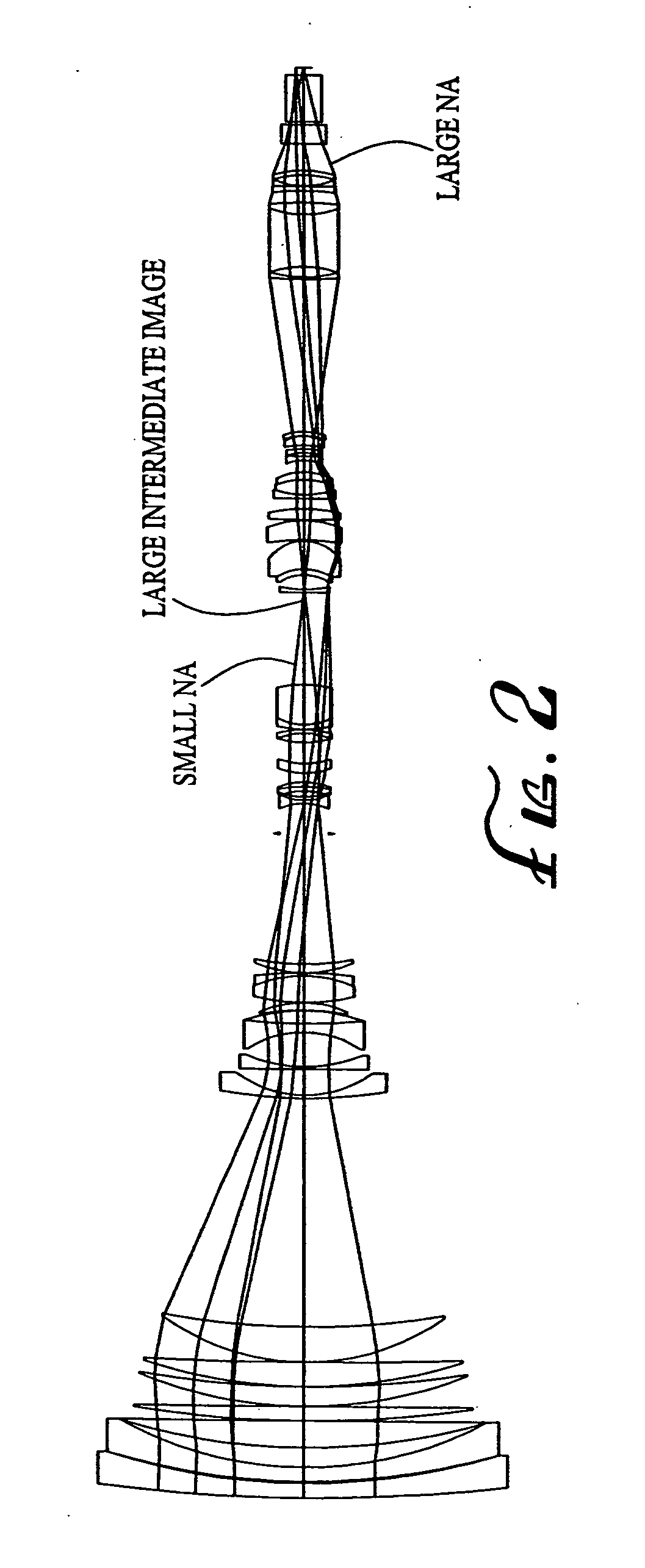Zoom lens system
a zoom lens and lens technology, applied in the field of optical lens systems, can solve the problems of reducing optical power, impracticality large and difficult to correct, large front group, etc., and achieve the effects of wide zoom range of focal lengths, high performance characteristics, and high performance zoom
- Summary
- Abstract
- Description
- Claims
- Application Information
AI Technical Summary
Benefits of technology
Problems solved by technology
Method used
Image
Examples
Embodiment Construction
[0026] In the following description of preferred embodiments, reference is made to the accompanying drawings, which form a part hereof, and in which is shown by way of illustration specific embodiments in which the invention may be practiced. It is to be understood that other embodiments may be utilized and structural changes may be made without departing from the scope of the preferred embodiments of the present invention.
[0027] In accordance with its general aspects, the invention provides a zoom lens system for forming a final image of an object, said system forming a first intermediate real image between the object and the final image, said system comprising: [0028] (a) a first optical unit (e.g., lens elements 8 through 15 in FIG. 10) located between the object and the first intermediate real image, said unit comprising at least one optical subunit which is moved to change the size (magnification) of the first intermediate real image (e.g., lens elements 8 through 11 are the p...
PUM
 Login to View More
Login to View More Abstract
Description
Claims
Application Information
 Login to View More
Login to View More - R&D
- Intellectual Property
- Life Sciences
- Materials
- Tech Scout
- Unparalleled Data Quality
- Higher Quality Content
- 60% Fewer Hallucinations
Browse by: Latest US Patents, China's latest patents, Technical Efficacy Thesaurus, Application Domain, Technology Topic, Popular Technical Reports.
© 2025 PatSnap. All rights reserved.Legal|Privacy policy|Modern Slavery Act Transparency Statement|Sitemap|About US| Contact US: help@patsnap.com



